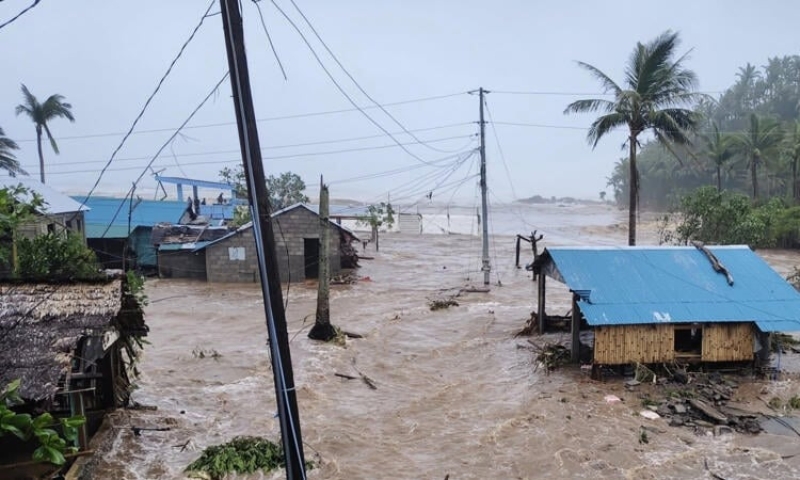- Khaleda now not fit for travelling: Medical Board |
- Panchagarh records lowest temperature 10.5°C so far this year |
- Christmas returns to Bethlehem after two years of Gaza war |
- কলাপাড়া মুক্ত দিবসে এবার সাড়া নেই কার |
- One killed, two injured in attack at Ctg meeting over marriage |
Typhoon Fung-wong Weakens After Displacing 1.4 Million

A weakened Typhoon Fung-wong moved away from the Philippines and headed across the South China Sea on Monday, after powerful winds and torrential rain killed at least two people and forced more than 1.4 million residents to evacuate.
Fung-wong, which covered almost the entire archipelago, made landfall on the eastern coast late Sunday as a super typhoon, toppling trees, damaging homes and flooding coastal communities. The storm arrived just days after Typhoon Kalmaegi struck the central Philippines, leaving at least 224 people dead.
Schools and government offices across large areas of Luzon, including Metro Manila, were closed on Monday. In Aurora province, where the typhoon first hit, authorities reported widespread damage and blocked roads caused by landslides, with power yet to be restored in several towns.
Local officials in Dingalan town described severe destruction along the shoreline, where large waves smashed homes and fishing boats.
The state weather bureau said Fung-wong is continuing to weaken as it moves toward Taiwan. One death was recorded in Samar province, where a 64-year-old woman was found under fallen trees while attempting to evacuate. A second person drowned in flash floods on Catanduanes island.
Residents in northern provinces, including Cagayan, took shelter in evacuation centres out of fear of rising floodwaters.
Catanduanes experienced heavy rains, strong winds and storm surges on Sunday. Residents reported waves crashing over seawalls and floodwaters rising rapidly, with verified video showing streets and buildings submerged. Major flooding was also reported in several towns in the Bicol region, where fast-moving water turned roads into torrents.
Scientists warn that climate change is fuelling more intense and destructive storms. Warmer ocean temperatures allow typhoons to strengthen rapidly, while a warmer atmosphere holds more moisture, resulting in heavier rainfall.

